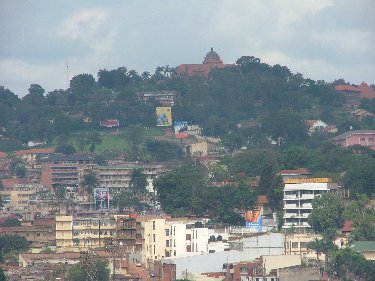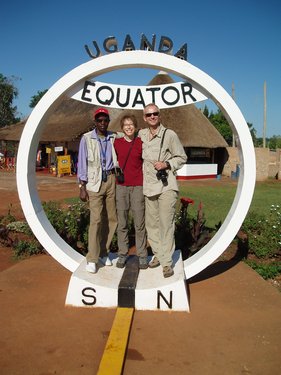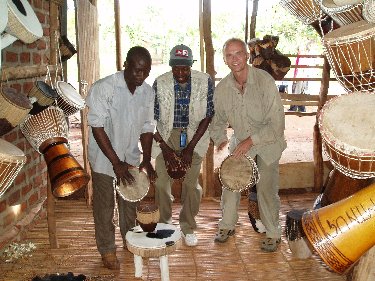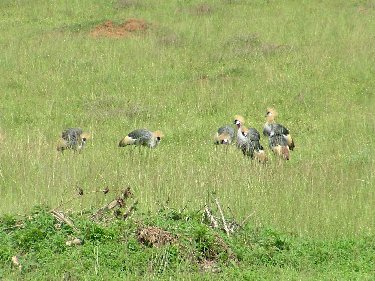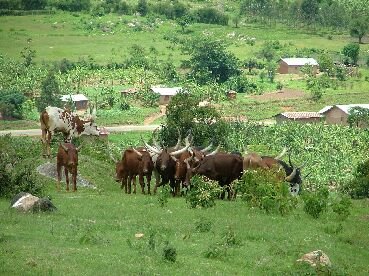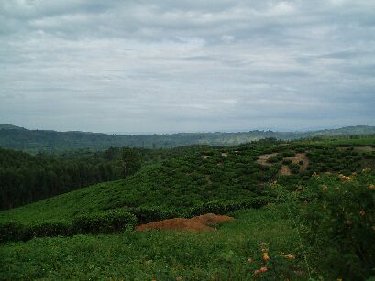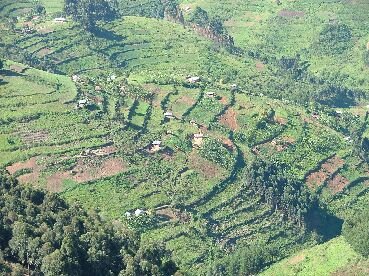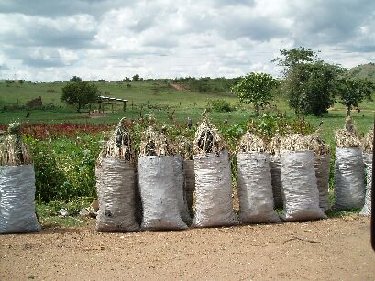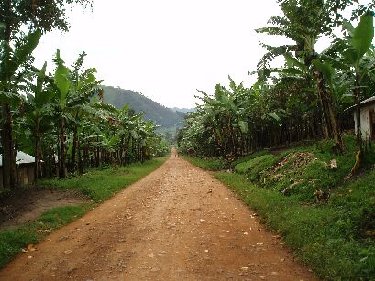|
|
WhereAreJanetandRick Uganda and the Gorillas |
|
Kampala to Bwindi
A room with a view
We were very tired but excited to be in Uganda. We went for a bite to eat with Isaac. We also met some of his friends who we would later tour Kampala/Entebbe with. Kamapla was a safe and clean city. It was an often sight to see a soldier with his rifle watching the streets. There were also many cars and motorbikes which act as cheap taxis. We walked around town a bit but then we had to get ready for our Gorilla adventure!
Back to the Equator!
Once again we crossed the Equator and watched the water rotate different ways! This time we took little video clips with our camera to prove it.
2 weeks to make one drum!
Our guide and driver, Moses, was very adept on the rough and steep roads between Kampala and Bwindi. We took different routes each way to vary the scenery. The 10-11 hour trip was exhausting but beautiful. We`stopped periodically & saw many lovely sites along the way. This was Richard Kabanga, the Drummakerís shop and the drum we bought!
The Crested Crane - Uganda's National Bird
We saw a few of these elegant birds en route to Bwindi (as well as a few lost pairs in Kenya!).
Ugandan Cattle
Throughout Tanzania and Kenya we saw some pretty thin cattle. In Uganda, not only were they better fed, but they came with some pretty serious headgear as standard equipment. It seemed that the further west we went, the bigger the horns got!
Not surprisingly, some unfortunate cows had lost an eye (just kidding).
Congo (Zaire)
At Bwindi Impenetrable Forest, we were close to the Rwandan and Congo borders. Some gorilla groups cross the borders (visas not required) to the disappointment of tourists who paid big bucks to catch a glimpse of them. Fortunately, ours stayed in Uganda during our visit.
In the photo at right, you can just see the Congo hills on the horizon.
Steep Hills around Bwindi
Within about 20 miles of the Bwindi, we came upon some VERY steep and fertile hills. Every square inch that could be farmed was - bananas, Irish potatoes, beets, tea, coffee ... This of course was all carried out manually, including taking the produce to market.
The picture at left is taken from the road, not from an airplane - that gives you an idea of how deep and steep the hills are. Imagine yourself walking down to the bottom level in the morning, carrying all of your tools and lunch with you, probably barefoot!! Then you work all day in the hot sun (note that there are few trees for shade), climb back up the hill, go home and make dinner for the family. I think that we have it pretty good back home!
Charcoal
Charcoal is the most common source of cooking fuel. It's produced by cutting wood, setting it on fire, and burying it so that it smolders into charcoal. It's then collected, packed in bags and sold at the side of the road, as shown in the picture at right.
Banana Road
The pictured road is about a mile from the entrance to Bwindi. On either side are residences and banana trees. Uganda produces MANY bananas in the west.
About 100 bananas grow on a thick stalk that weighs about 15 kilos when it is cut down ready for sale. These stalks are transported by bicycle to a market or pick-up point for export. As many as 5 stalks are attached to a one speed bicycle which is ridden on flats and downhills, & pushed uphill! The next time that you eat a banana, appreciate the hard work involved in getting it to you.
| |||||||||||||||||||||||||
